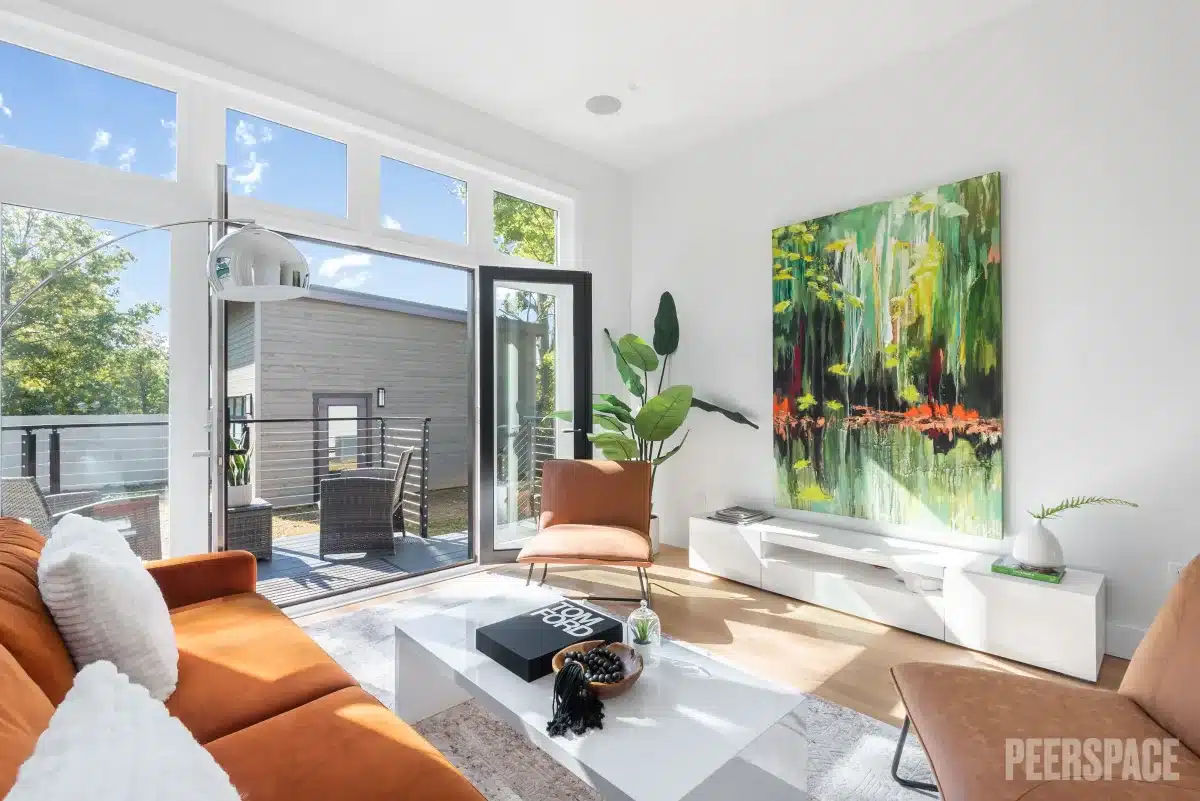In this interview New York collector Gregory Fraser shares his passion for art, architecture, and the joy of harmonizing the two.

I have always been fascinated with art, drawing, sketching, and drafting. I attended art school at a very young age and studied architecture in college. Many years ago, I purchased my first artwork from an artist after I saw one of his paintings hanging in a colleague’s office at work. The vibrant colors and expressive forms on canvas spoke a lyrical language that I immediately recognized as being reminiscent of works from the Abstract Expressionism art movement and the visual arts coming out of the New York School. So I asked my work colleague to introduce me to the artist. I met Mr. Anthony Liggins at his studio and purchased my first painting from him the same day. I have been a steady collector of his art for over 20 years.
Beaufort Castle, aka Castle Dounie, is a Scottish Baronial style mansion located in the Highlands of Scotland situated west of Inverness. The current version of the castle was built in 1880, which incorporated remnants of the earlier castle dating back to the 12th century. The original castle was built by the Byset family and has been the traditional seat of the Chiefs of the Clan Fraser of Lovat since the 13th century. In the 1740s, my ancestor, Simon Fraser, 11th Lord Lovat, commissioned famed Scottish architect, William Adam, to build a new castle on the site. Despite preparations for construction, sadly, the new Adamesque style castle was never built because the Jacobite Rising of 1745 interrupted the build. After the Scots lost the conflict to the British, the Lovat Fraser estates were confiscated by the Crown, including Castle Beaufort, which was razed during the war. The Beaufort estate was eventually returned to Simon’s son in 1774 and the mansion was restored at various points in the early and late 19th centuries, however not to William Adam’s designs.

The Bauhaus-inspired design for my home is a modern reimagined view of what William Adam’s design for Beaufort Castle might have looked like if it had been built. Adam and his sons, Robert and James, created the Adam style of architecture, which consistently used the idea of “movement in architecture” and advocated an integrated approach to architecture in which the architect designs all elements in a house, such as decorative art, motifs, and frescoes applied to wall and ceilings, furniture, fixtures, fittings, interiors.
The German Bauhaus movement is essentially a modern take on the Adam style, in my view. Bauhaus design principles sought to bring together all the fine arts in a collaborative and integrated manner. The Bauhaus was first and foremost an architectural movement, but it also strongly influenced the development of graphic design, interior and furniture design, music, performing arts, literature, sculpture as well as other arts such as woodworking and metalworking. It promoted the interaction of various fine arts within an architectural framework and sought a “total design” approach when executing the design of a building, similar to Adamesque principles.
If the Jacobite Rising never happened and William Adam was able to start the restoration of Beaufort Castle in 1745, he likely would not have survived to finish its completion because he died in 1748. The build likely would have been undertaken and finished by his sons, Robert and James, who became ardent fans of classical Roman architecture after their travels to Italy and Dalmatia. Hence, Beaufort Castle would have been deployed with classical forms and elements from Roman antiquity in a neoclassical manner. The design of my house also deploys classical forms and elements but in a modernist manner.

I view art and architecture as complementary art forms that work together in harmony. Architecture is an expressive art and method for planning and designing buildings that are aesthetically appealing as well as functional. Interestingly, the Bauhaus movement was the genesis of modernist architecture, which is still popular today. The modern art movement evolved around the same time as modern architecture. They constantly influenced and inspired each other. In fact, many modern architects were also artists and furniture designers. The most admired architectural buildings inspire, communicate, and convey an idea or a feeling based on how the architect designed a space or series of spaces that people experience and move through over time in a three-dimensional environment. This is very similar to what a beautiful piece of artwork does but in a two-dimensional setting. In my view, harmony between architecture and art in the home requires an abundance of natural light, high ceilings, white wall surfaces, and an open floor plan to showcase the artwork and experience it from various vantage points. Each piece of art needs its own uncluttered space from which to absorb the artist’s intentions. These are the principles that I have deployed in the design of my home.


The art of Mr. Liggins is held in high regard in my collection. Over the years, I have acquired roughly 10-15 pieces of his artwork. His art is constantly evolving and he experiments with different styles of art. Though his art is grounded in Abstract Expressionism, Mr. Liggins also borrows from other genres of Modern Art, including Cubism, Impressionism, Surrealism, and Symbolism.

I frequently attend exhibitions at art galleries and art fairs. Many of my pieces were acquired from artists who exhibited at Agora. Also, I recently discovered new artists whose works at Art Basel Miami and I subsequently acquired a few of their pieces for my collection.
At the moment, I do not have a particular work that I wish to acquire. But I am constantly on the lookout for art that communicates a story to me, particularly from artists whom I admire and have collaborated with or collected from in the past.
One thought on “What I Collect and Why: Gregory Fraser”